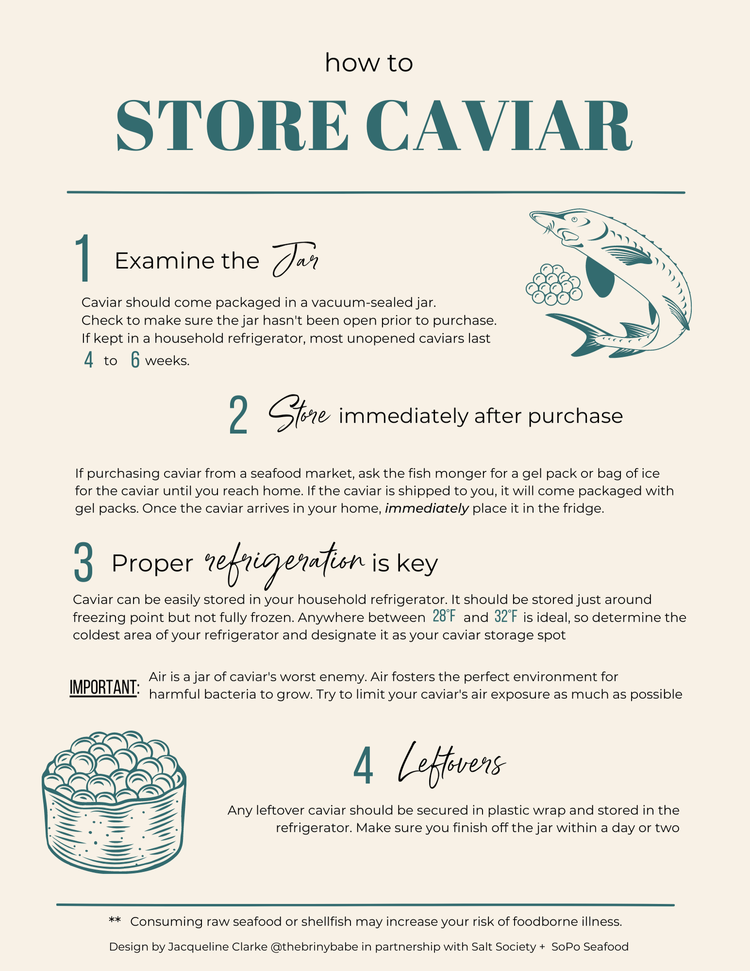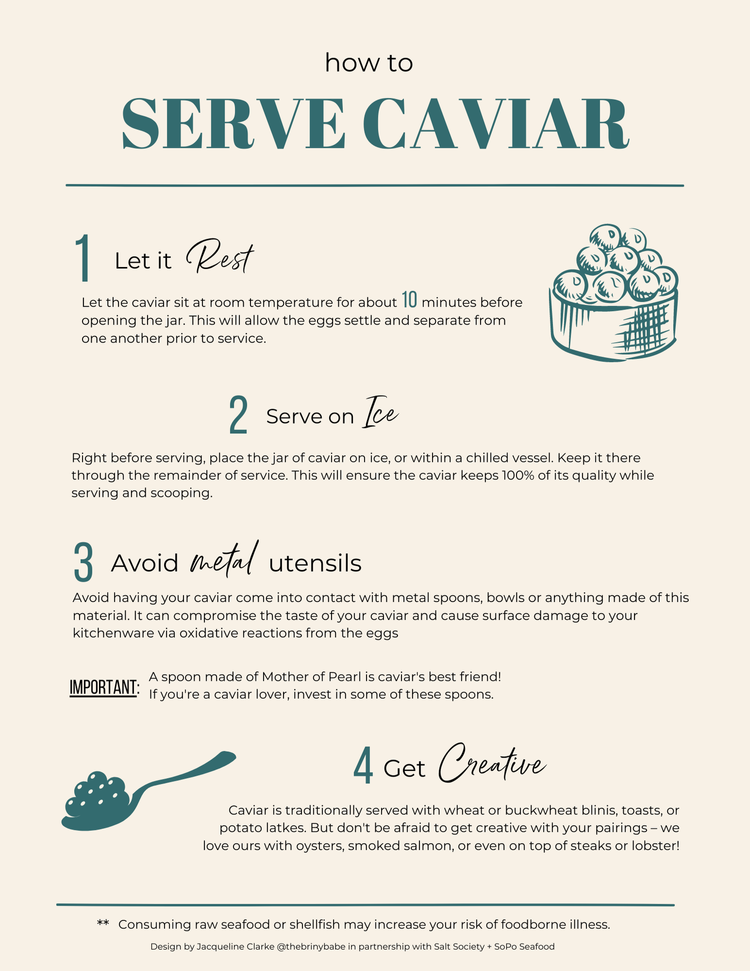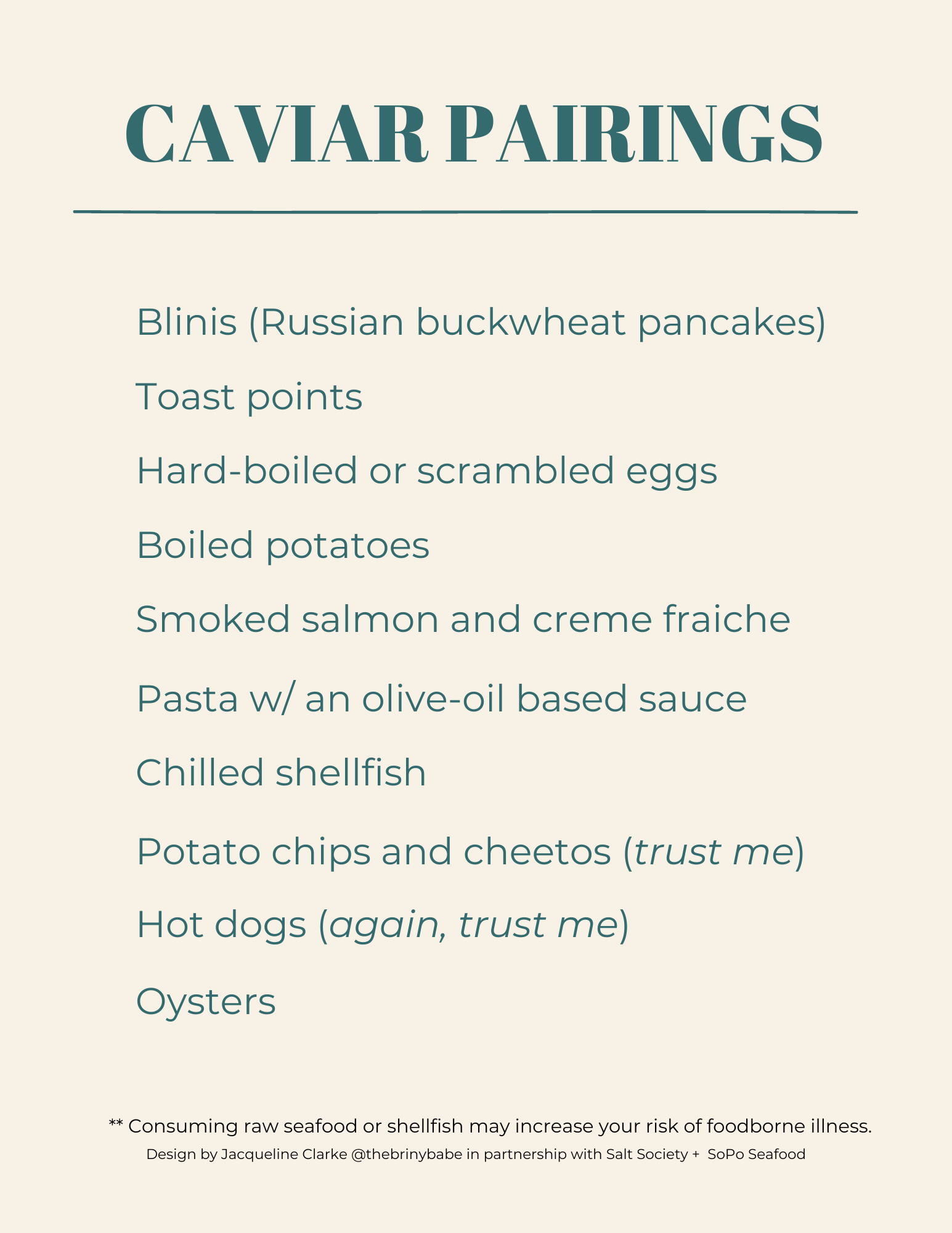How to Serve + Store Caviar
Caviar is a delicious delicacy, but also a highly delicate and perishable product. Caviar shouldn't go to waste simply because of how you store it. It is important to take the utmost care to maintain the highest quality and freshness. There are multiple factors that influence caviar shelf life, and we'll walk you through some tips and tricks to keep your caviar fresh before indulging in its luxuriousness.
Here are some tips on how to store your caviar!
First, what kind of jar is the caviar stored in? All of our caviar here at SoPo Seafood is stored in glass vacuum-sealed containers. If kept in a household refrigerator, most unopened caviars last four to six weeks.
Second, store the caviar immediately after purchasing it. If you purchase caviar from a seafood market, ask the fish monger for a gel pack or some ice in a bag to place the caviar on top of during transport home. If you are having caviar shipped to you from SoPo Seafood, it will come with cold packaging and several gel packs to ensure freshness. Don’t let it sit outside in the heat any longer than necessary — the caviar should immediately be taken out of the box and moved to the fridge.
Third, caviar can be easily stored in your household refrigerator. It should be stored just around freezing point but not fully frozen. Anywhere between 28 and 32 degrees is ideal, so determine the coldest area of your refrigerator and designate it as your caviar storage spot. Sometimes the refrigerator's bottom drawer or the very bottom, back part of the fridge can preserve optimal quality by protecting it from temperature changes. While some varieties may last longer than others, most will start to go bad after a month. We do not recommend storing caviar in the freezer, as this impacts the texture of most varieties.
Important: Air is a jar of caviar's worst enemy. Air fosters the perfect environment for harmful bacteria to grow. Try to limit your caviar's air exposure as much as possible. When left unrefrigerated, caviar can start to spoil after about two hours. If the serving area is 90 degrees or above, it can start to go bad after one hour.
Got leftovers? Any leftover caviar should be secured in plastic wrap and stored in the same place, but don’t forget about it! Make sure you finish off the jar within a day or two.
How to serve your caviar!
Let the caviar sit at room temperature for about 10 minutes before opening the container to let the eggs settle and separate from one another.
From here, you can put the container on ice and serve or move it to a separate cold vessel. Proper dishware and implements are key here and help ensure the caviar keeps 100% of its quality while serving and scooping.
Avoid having your caviar come into contact with metal spoons, bowls or anything made of this material. It can compromise the taste of your caviar and cause surface damage to your kitchenware via oxidative reactions from the eggs.
Finally, caviar is traditionally served on its own on a mother of pearl spoon, or on blinis, toasts, or potato latkes with crème fraiche, accompanied by champagne or vodka. But don't be afraid to get creative with your caviar pairings – we love ours with oysters, smoked salmon, or even on top of steaks or lobster.




